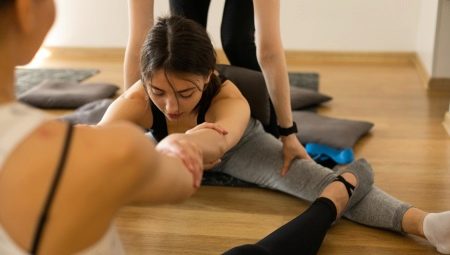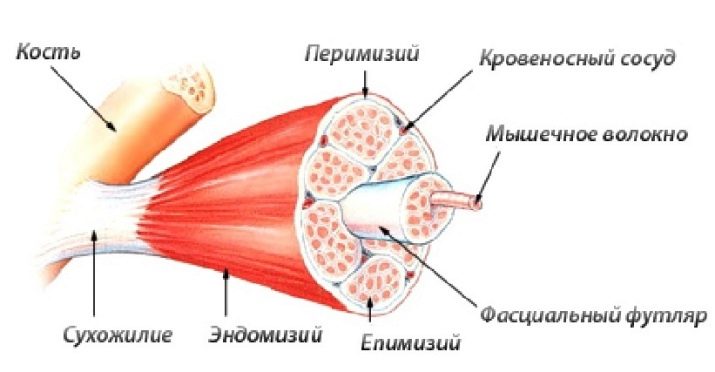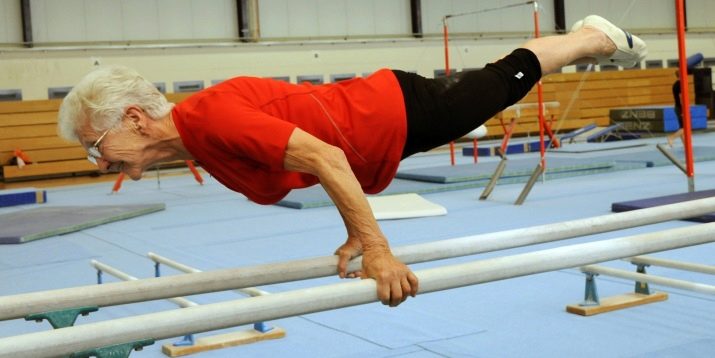Muscle memory: what is it and how to develop it?

The body's ability to respond to physical activity after a long pause and achieve past results is explained by the work of muscle memory.
What it is?
Muscle memory develops as a result of physical activity and provides the recovery of muscle mass after prolonged inactivity. The human body is able to remember the level of muscle tone that has occurred in the nerve cells and the structure of muscle fibers. Long-term changes occur in the body, information about which gets into the motor cortex of the human brain. All information about the number of muscle contractions and about any other physical activity is stored in the brain structures. Physical actions, brought to automatism, fall into the memory store.
The formation of such memorization occurs at an unconscious level. The main purpose of muscle memory is to resume training after a forced interruption and use at its own discretion. This process provides the athlete with a quick recovery of sports form after a long pause associated with an illness, injury, a business trip, the birth of a child or due to another circumstance. People who once went in for sports recover faster after a heart attack, stroke and other serious illnesses.
Besides, well-developed muscle memory helps to reduce the risk of injury.
The ability to ride a two-wheeled bicycle is a convincing example. A person, while still a child, who has learned to maintain balance while riding this type of transport, never loses the skill. Actions and movements are reproduced automatically over a large number of years.

Functioning mechanism
Muscle memory works through the interaction of muscles and the brain, the connecting component of which is the nervous system. During exercise, the brain evaluates exercise levels and decides which organs and body parts to use. Through the nerve fibers, impulses are sent to the muscles capable of performing the necessary actions to achieve the desired result. The information is recorded in the muscle fibers. If it is necessary to perform such an exercise in the future, the muscles are ready for its implementation.
This type of memory is closely associated with muscle fibers of a certain size. They are the fusion of several cells that unite the cytoplasm. The muscle fiber has a multi-core system. Satellite cells are capable of dividing to increase the number of nuclei, each of which is surrounded by ribosomes. It is in them that protein synthesis occurs. These processes lead to the growth of muscle fibers, which can be 5 times the size of a mononuclear cell. In untrained fibers, there are few nuclei, so they have small parameters.
During hard training, the muscles are in a stressful situation. Over time, the overgrown fiber lacks the available nuclei, and the muscles reach their maximum. The basis of muscle memory is formed by new nuclei formed as a result of overload. With subsequent muscle atrophy, they are not removed, but are in a dormant mode. Inactive nuclei do not synthesize proteins at this time.
The number of additional nuclei capable of controlling muscle fiber volume increases with the resumption of physical activity. The muscles quickly return to their original size.

Muscle memory is most easily monitored by observing bodybuilders. Lack of training leads to a decrease in muscle mass. This does not mean that the additional nuclei formed began to die off. They go into standby mode.
With the resumption of physical activity, the nervous system increases the excitability of motor neurons located in the right hemisphere of the brain and sends certain signals to muscle fibers. The musculature also sends impulses to the brain structures. The neuromuscular connection is improved. Accelerated growth of new blood vessels and increased nutrition of the motor block, protein synthesis in muscles allow a previously trained person to quickly recover after a long break.

How long does it last?
Research results indicate the imprinting and retention in muscle memory of once mastered muscle load over a long period. Contrary to the expectations of the scientists who conducted the experiments, the cell nuclei formed by increasing the level of muscle activity are not lost when the intensity of training is reduced. Studies have shown that for 3 months the muscles were not used, but at the same time they were in standby mode. After the person returned to physical exercises, hypertrophic processes became more active, and protein synthesis in muscle cells increased. The cores began to function fully. The subjects were able to quickly regain physical shape.
The period of information storage in muscle memory is not exactly known. It persists for a very long time, therefore, after a forced break in training, the volume of muscles for athletes to increase is much easier and faster than when pumping up body weight for beginners. The nuclei created by training are retained for at least 2 months. They can stay for many years. An adult can easily return to the sport he played as a child.

How to develop?
At a young age, the process of increasing muscle mass occurs much faster than in older people. Although there have been cases of muscle building by 90-year-olds.
Long-term correct training and their meticulous analysis help to give the muscles volume and strength. Experts recommend the use of individually designed programs. It is best to do the exercises with the help and supervision of a qualified instructor. Improper exercise can harm the body. Wrong information will be imprinted in the muscle memory, which the muscles will use in the future.
A gradual increase in loads is recommended. In this case, the muscles adapt well. Each new overcome weight improves coordination, gives the body strength and endurance. If there is no progress while getting used to certain exercises, you can pause their implementation. The technique of reproducing training tasks remains in muscle memory, so efforts to restore it after returning to the gym will be minimal.
Psychological methods based on self-hypnosis help to achieve the desired results faster. They are used along with physical activity.
- Before going to bed, it is recommended to imagine your perfect body. In the moments of immersion in sleep and in the moments of awakening, you need to mentally reproduce the desired muscles. The image is imprinted and sent to the structures of the brain. Each time you wake up at night, the manipulation must be repeated over and over again.
- Experts advise to mentally imagine a red-hot ball. It is necessary to clearly feel it and begin to roll it over all parts of the body. First you need to try to move this ball to the larynx, then lower it to the solar plexus, then you need to redirect the imaginary object to the hip part of the body and, finally, it should touch the feet. Exercise should be done 5 times before going to bed. It helps pave new paths to nerve endings.
Regular physical and psychological training contributes to the development of harmoniously built muscles. Temporary cessation of exercise does not cause much damage to the body. The previous indicators are easily restored in a short time.









